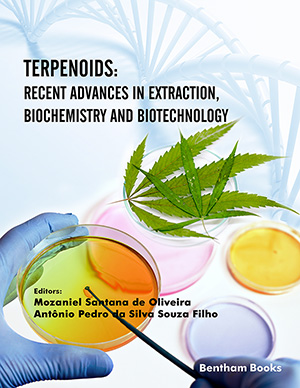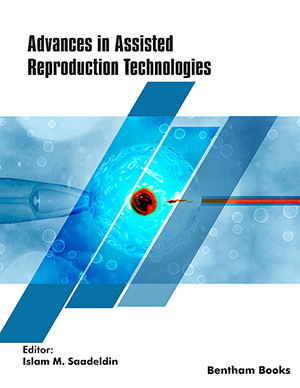
Abstract
Background: The biological function of α-Synuclein (α-Syn), which includes controlling synaptic vesicles, is regulated by phosphorylation at the Tyrosine 39 (pY39) residue. This function can be important for both normal and aberrant functions, and it relies on the interaction of α-Syn with the lipid membrane. pY39 α-Syn is found to form morphologically distinct fibrils relative to wild-type (WT) α-Syn and shows less affinity to negatively charged vesicles. Also, the phosphorylation at position Serine 87 (pS87) is increased in synucleinopathies, which inhibits α- Syn oligomerization and affects the interaction between α-Syn and the membrane.
Objective: This work aimed to study the effects of post-translation modifications of α-Syn (pY39 and pS87) using all-atom Molecular Dynamics (MD) simulation.
Method: In this computational study, we used all-atom MD simulations to investigate the effects of phosphorylation (pY39 and pS87) on protein-membrane interaction. The MD trajectories obtained were analyzed, and secondary structural content was calculated using YASARA software to perform a salt-bridge interaction study. Also, Principal component analysis was performed to analyze the secondary minima and global minima of the phosphorylated proteins.
Results: From the MD study, we observed that phosphorylation at the Tyr 39 position in α-Syn has a marked effect on its interaction with the lipid membrane. The conformational snapshots of α-Syn obtained showed a high degree of fluctuations in the N-terminal region that disrupts the helix- 2 binding region. The secondary structures of pS87 α-Syn were found to be retained and influence the NAC region to immerse into the membrane while inhibiting the potential to interact with other neighbouring molecules. Moreover, it was observed that in the case of pY39 α-Syn as opposed to pS87 α-Syn, there were larger energy disparities between the local and global minima of the overall structure.
Conclusion: Therefore, disruption of the helix-2 binding region may affect the binding to the lipid membrane and take over interaction with other proteins or vesicles. In the case of pS87 α-Syn, the structure showed higher stability, but the NAC domain was found to emerge out of the membrane.
Keywords: Membrane dynamics, phosphorylated α-Syn, protein aggregation, molecular dynamics, α-Synuclein, parkinson’s disease.
[http://dx.doi.org/10.1016/j.brainres.2015.06.002] [PMID: 26080075]
[http://dx.doi.org/10.1074/mcp.R113.032730] [PMID: 23966418]
[http://dx.doi.org/10.1016/j.arr.2014.01.004] [PMID: 24503004]
[http://dx.doi.org/10.1073/pnas.95.11.6469] [PMID: 9600990]
[http://dx.doi.org/10.1038/ncb748] [PMID: 11813001]
[http://dx.doi.org/10.1074/jbc.M600933200] [PMID: 16847063]
[http://dx.doi.org/10.1016/S0079-6123(10)83007-9] [PMID: 20696318]
[http://dx.doi.org/10.1523/JNEUROSCI.5922-09.2010] [PMID: 20203178]
[http://dx.doi.org/10.1074/jbc.275.1.390] [PMID: 10617630]
[http://dx.doi.org/10.1074/jbc.M606147200] [PMID: 16959772]
[http://dx.doi.org/10.1371/journal.pone.0006629] [PMID: 19680561]
[http://dx.doi.org/10.1073/pnas.90.23.11282] [PMID: 8248242]
[http://dx.doi.org/10.1016/S0014-5793(98)01418-5] [PMID: 9862428]
[http://dx.doi.org/10.1074/jbc.M008919200] [PMID: 11060312]
[http://dx.doi.org/10.1073/pnas.0908005106] [PMID: 19892735]
[http://dx.doi.org/10.1021/bi900539p] [PMID: 19722699]
[http://dx.doi.org/10.3390/cells11050906] [PMID: 35269528]
[http://dx.doi.org/10.1038/nrn3406] [PMID: 23254192]
[http://dx.doi.org/10.2174/1871524917666170427152849] [PMID: 28460628]
[http://dx.doi.org/10.1073/pnas.1922741117] [PMID: 32737160]
[http://dx.doi.org/10.1107/S0907444902003451] [PMID: 12037327]
[http://dx.doi.org/10.1002/jcc.20945] [PMID: 18351591]
[http://dx.doi.org/10.1038/ncomms12563] [PMID: 27640673]
[http://dx.doi.org/10.1080/07391102.2023.2193997] [PMID: 36961209]
[http://dx.doi.org/10.1021/ct400341p] [PMID: 26583988]
[http://dx.doi.org/10.1002/bip.360221211] [PMID: 6667333]
[http://dx.doi.org/10.1007/978-1-4939-7366-8_4] [PMID: 29086303]
[http://dx.doi.org/10.3390/ijms19092808] [PMID: 30231501]
[http://dx.doi.org/10.1002/prot.20549] [PMID: 16021620]
[http://dx.doi.org/10.3390/ijms24032971] [PMID: 36769293]
[http://dx.doi.org/10.1080/07391102.2023.2262599] [PMID: 37768058]
[http://dx.doi.org/10.1080/07391102.2017.1347060] [PMID: 28650719]
[http://dx.doi.org/10.1002/anie.201911383] [PMID: 31625226]
[http://dx.doi.org/10.1063/5.0188714] [PMID: 38435467]
[http://dx.doi.org/10.3389/fmolb.2022.1066029] [PMID: 36703920]


























